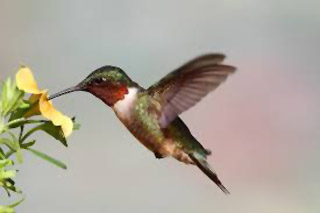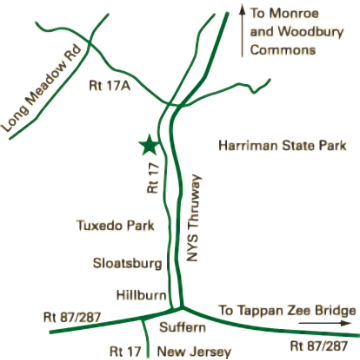
Hummingbirds are so much fun to see in the garden, so bright and cheerful! If you would like to enjoy these little guys year after year, there are some easy tips to follow. And once hummingbirds discover your property, the same individuals are likely to return each year at about the same time; they are remarkable creatures of habit. Once hummingbirds do start visiting your garden, they are likely to continue throughout the season and will usually return the following year. If visits drop off for a week or two in midsummer, the reason may be that an especially attractive nearby flower patch may have temporarily diverted your hummingbirds. They prefer openings in the forest and forest edge, with a range of meadows, lawn, trees, and shrubs. To keep hummingbirds content and always returning there are a few necessities to provide, such as food, water, shelter, perches, and nesting sites.
Food
Food for hummingbirds involve nectar rich flowers, as well as insects. Hummingbirds are drawn to brightly colored tubular flowers which hold the most nectar. Red is most attractive, as well as orange and pink. Yellow and white flowers are not so attractive to these little charmers. Plant patches of the same species (three or more plants) to provide larger quantities of nectar, and select plants that bloom at different times of the year to provide nectar throughout the hummingbird season. Insects are especially important for hatchlings, they provide essential proteins for maximum growth. So, it’s important to keep in mind the garden needs to be insect friendly. A great help to attracting the hummingbirds is placing sugar filled hummingbird feeders throughout the space.
Water
Water is also essential to keeping a hummingbird attracted to your garden. Provide water baths, garden misters, drip fountain devices, and small waterfalls. Like most birds, hummingbirds frequently bathe in shallow water—even in the drops that collect on leaves. Hummingbirds may sit and fluff and preen or flit through the droplets. Broad-leafed plants are ideal where the water can accumulate, hummingbirds will also bathe by rubbing on those wet leaves.
Shelter
Hummingbirds require shelter, which means some trees are necessary to provide adequate perches and sheltered areas safe from predators or poor weather. Large trees are often used for perches, as springboards for courtship displays, and for nesting.
Nesting Sites
Include some fuzzy plants. Hummingbirds usually line their nest with soft plant fibers. Two favorites are cinnamon fern, which has a fuzzy stem, and pussy willow. Leave some thistle and dandelion, other favorite nest-building materials, in your yard. The trunks of large trees also provide hummingbirds a source of lichens—a camouflaging decoration that some species attach to the outsides of their nests with spider silk. Nesting sites for hummingbirds may include clotheslines, wires, and they use spider webs for their nesting material.
Ideal Flowers
These include perennials such as bee balms, perennial phlox, Lupine, kniphofia, hollyhock, columbine, daylilies, heuchera, cardinal flower, foxglove, Butterfly bush, rose of sharon, trumpet vine, honeysuckle, and many annuals, including lantana, salvia, cleomes, impatiens, and petunias.






